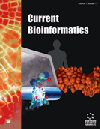- Home
- A-Z Publications
- Current Bioinformatics
- Previous Issues
- Volume 11, Issue 4, 2016
Current Bioinformatics - Volume 11, Issue 4, 2016
Volume 11, Issue 4, 2016
-
-
GPU Acceleration of an Entropy-Based Model to Quantify Epistatic Interactions Between SNPs
More LessAuthors: Carlos Riveros, Manuel Ujaldon and Pablo MoscatoThe process of characterizing naturally occurring variations in the human genome has captivated the high performance computation community over the past few years. Changes known as biallelic Single-Nucleotide Polymorphisms (SNPs) have become essential biomarkers both in evolutionary relationships and propensity to degenerative diseases. It is being increasingly accepted that traditional statistical SNP analy Read More
-
-
-
Enhancing Scoring Performance of Docking-Based Virtual Screening Through Machine Learning
More LessAuthors: Cândida G. Silva, Carlos J.V. Simoes, Pedro Carreiras and Rui M.M. BritoMolecular docking may be reasonably successful at reproducing X-ray poses of a ligand in the binding site of a protein, but scoring functions are typically unsuccessful at correctly ranking ligands according to their binding affinity. Using a set of challenging target enzymes, we show how the use of support vector machines (SVMs), trained with the individual energy terms retrieved from docking-based virtual screening (VS) ex Read More
-
-
-
Chaperone Therapy: New Molecular Therapy for Protein Misfolding Diseases with Brain Dysfunction
More LessAuthors: Yoshiyuki Suzuki, Kousaku Ohno and Aya NaritaChaperone therapy was proposed as a new molecular therapeutic approach almost simultaneously to lysosomal diseases and cystic fibrosis, caused by gene mutations resulting in misfolding of expressed proteins. In our original papers, we reported that unstable mutant lysosomal enzymes causing lysosomal diseases resulted in rapid intracellular degradation and loss of catalytic function. However, in the presence Read More
-
-
-
GPU-Based Acceleration of ECG Characterization Using High-Order Hermite Polynomials
More LessAuthors: Alberto Gil, David G. Márquez, Gabriel Caffarena, Ana Iriarte and Abraham OteroIn this paper we address the acceleration of the Hermite function characterization of the heartbeat by means of massively parallel Graphics Processing Units. This characterization can be used to develop tools to help the cardiologist to study and diagnose heart disease. However, obtaining this characterization, especially when a large number of functions is used to achieve a high accuracy in heartbeat representati Read More
-
-
-
AutoFlow, a Versatile Workflow Engine Illustrated by Assembling an Optimised de novo Transcriptome for a Non-Model Species, such as Faba Bean (Vicia faba)
More LessAuthors: Pedro Seoane, Sara Ocaña, Rosario Carmona, Rocío Bautista, Eva Madrid, Ana M. Torres and M. Gonzalo ClarosThe use of workflows to automate routine tasks is an absolute requirement in many bioinformatics fields. Current workflow manager systems usually compromise between providing a user-friendly interface and constructing complex, scalable pipelines. We present AutoFlow, a Ruby-based workflow engine devoid of graphic interface and tool repository, that is useful in most computer systems and most workflow requiremen Read More
-
-
-
Protein Fold Recognition Using Self-Organizing Map Neural Network
More LessAuthors: Ozlem Polat and Zümray DokurIn this work, we propose a solution for the recognition of protein folds using Self-Organizing Map (SOM) neural network and present a comparison between few approaches. We use SOM, Fisher’s Linear Discriminant Analysis (FLD), K-Nearest Neighbor (KNN), Support Vector Machine (SVM) and Multi-Layer Perceptron (MLP) methods for the recognition of three SCOP folds with six attributes (amino acid composition, predicted sec Read More
-
-
-
Pair-End Inexact Mapping on Hybrid GPU Environments and Out-Of-Core Indexes
More LessAuthors: José Salavert, Andrés Tomás, Ignacio Medina, Kunihiko Sadakane and Ignacio BlanquerDue to the NGS data deluge, sequence mapping has become an intensive task that, depending on the experiment, may demand high amounts of computing power or memory capacity. On the one hand, GPGPU architectures have become a cost-effective solution that outperforms common processors in specific tasks. On the other hand, out-of-core implementations allow to directly access data from secondary memory, whi Read More
-
-
-
State Grammar and Deep Pushdown Automata for Biological Sequences of Nucleic Acids
More LessAuthors: Nidhi Kalra and Ajay KumarIn this paper, we represent deoxyribonucleic acid (DNA) and ribonucleic acid (RNA) biological sequences using state grammar and deep pushdown automata. The major benefit of this approach is that the DNA and RNA sequences can be parsed in linear time O(n) , where n is the length of the string, which is a significant improvement over the existing approaches. In the various existing approaches in the literature, these seque Read More
-
-
-
Network Analysis of Protein Structures: The Comparison of Three Topologies
More LessAuthors: Wenying Yan, Guang Hu and Bairong ShenTopology plays a central role in the structure of a protein. Network theoretical methods are being increasingly applied to investigate protein topology. In this paper, amino acid contact energy networks (AACENs) are constructed for globular, transmembrane and toroidal proteins. The effects of topology on proteins are investigated by the differences of various network parameters among three kinds of protein topologi Read More
-
-
-
A Hybrid Binary Cuckoo Search and Genetic Algorithm for Feature Selection in Type-2 Diabetes
More LessData mining techniques are applied in bioinformatics to analyze biomedical data. When the number of features related to the data is irrelevant, the classifiers will produce unsatisfactory results. This paper addresses the need to analyze the data for extracting relevant features. A number of feature selection algorithms are developed in the field of medical data to address feature selection. In this paper, an intelligent hybrid o Read More
-
Volumes & issues
-
Volume 20 (2025)
-
Volume 19 (2024)
-
Volume 18 (2023)
-
Volume 17 (2022)
-
Volume 16 (2021)
-
Volume 15 (2020)
-
Volume 14 (2019)
-
Volume 13 (2018)
-
Volume 12 (2017)
-
Volume 11 (2016)
-
Volume 10 (2015)
-
Volume 9 (2014)
-
Volume 8 (2013)
-
Volume 7 (2012)
-
Volume 6 (2011)
-
Volume 5 (2010)
-
Volume 4 (2009)
-
Volume 3 (2008)
-
Volume 2 (2007)
-
Volume 1 (2006)
Most Read This Month
Article
content/journals/cbio
Journal
10
5
false
en


